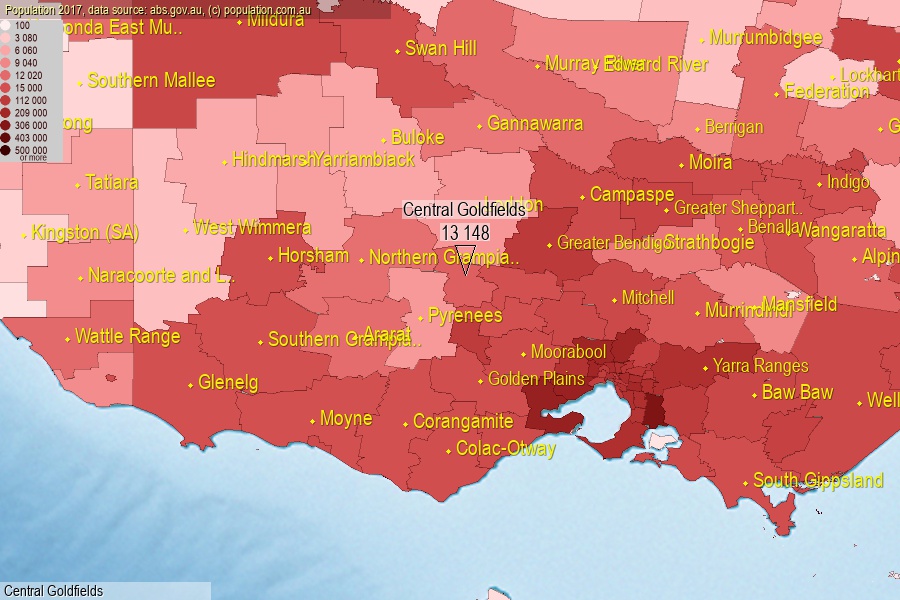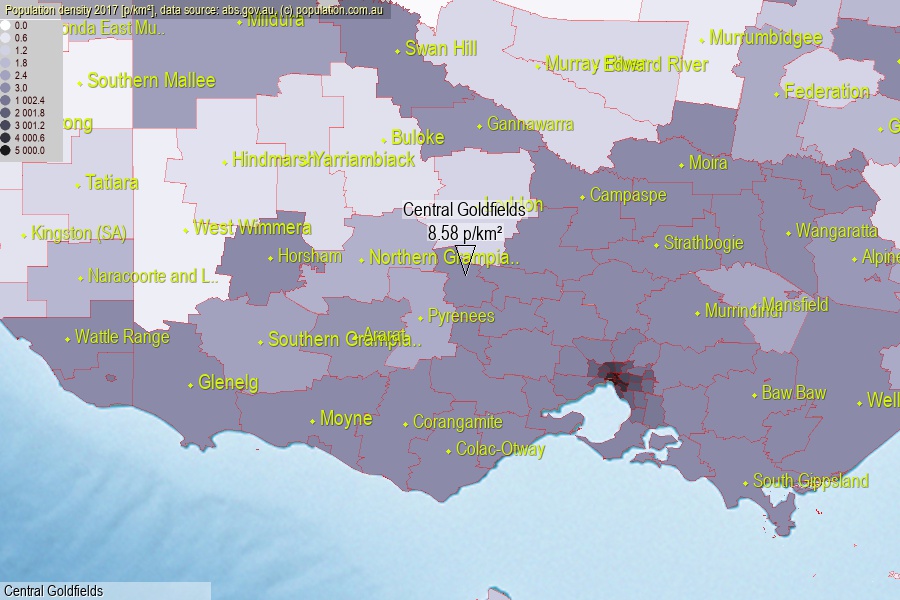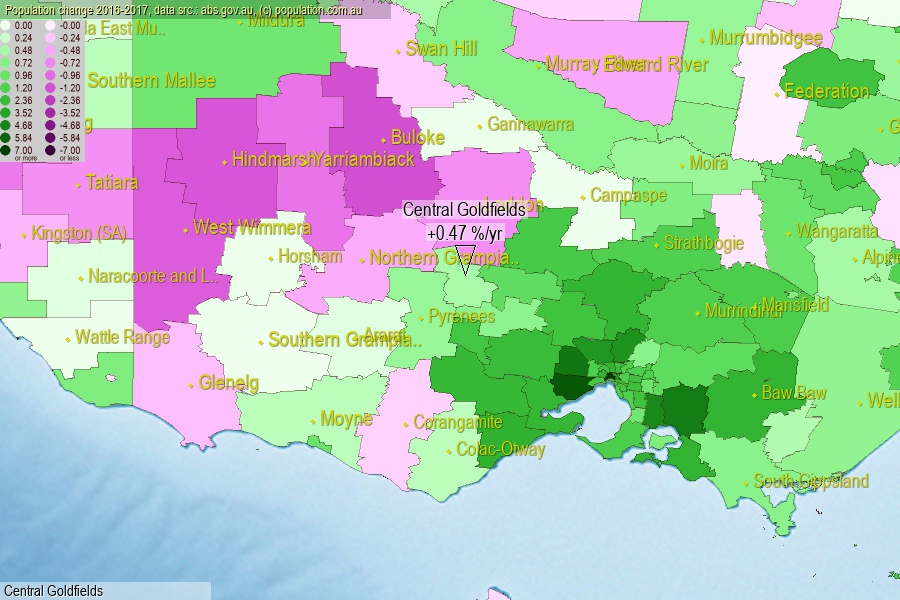 population.com.au
population.com.auLast official estimated population of Central Goldfields Shire (as Local Government Area) was 13 148 people (on 2017-06-30)[2]. This was 0.05% of total Australian population and 0.204% of VIC population. Area of Central Goldfields is 1 532.80 km², in this year population density was 8.58 p/km² . If population growth rate would be same as in period 2016-2017 (+0.47%/yr), Central Goldfields population in 2025 would be 13 646. [0]



Click to enlarge. Central Goldfields is located in the center of the images.
Population [people], population density [p./km²] and population change [%/year] [2]
[1996-2001] -0.04 %/Y
[2001-2002] -0.41 %/Y
[2002-2003] -0.80 %/Y
[2003-2004] -1.30 %/Y
[2004-2005] -0.58 %/Y
[2005-2006] -0.47 %/Y
[2006-2007] +0.30 %/Y
[2007-2008] +0.48 %/Y
[2008-2009] +0.45 %/Y
[2009-2010] +0.10 %/Y
[2010-2011] -0.17 %/Y
[2011-2012] +1.07 %/Y
[2012-2013] +0.79 %/Y
[2013-2014] +0.54 %/Y
[2014-2015] +0.51 %/Y
[2015-2016] +1.06 %/Y
[2016-2017] +0.47 %/Y
[0] Calculated with linear interpolation from officially estimated population
[1] Read more about LGA and Australian Statistical Geography Standard (ASGS) on abs.gov.au
[2] Population data from Australian Bureau of Statistics (Population and density: 2017; change: 2016-2017)
[3] Digital Boundaries: Australian Statistical Geography Standard (ASGS) 2016.